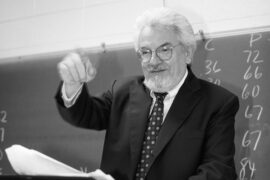Stocking your drinking gear to up your game
By Matthew DeBord
HQ 105 | SPRING 2019
And now for something a little different! Instead of exploring a wine, spirit or cocktail with this column, I’m going to run through a list of gear that you need to enjoy the drinking life (in moderation, of course).
To be honest, my own collection of drinking gear is fairly modest. I have a “waiter’s friend” folding corkscrew (I used to have dozens, a function of working in the wine business, but I’m down to my last one), a decanter and a motley assortment of wine glasses. I once owned a cocktail shaker, but I now mainly mix stirred cocktails for friends, so even that classic accouterment has been retired.
But don’t be like me! There’s an abundance of wonderful wine gear and barware out there, and you should get some of it.
For starters, you must have a good corkscrew. A cheap one will damage corks and possibly injure you. The most famous model is made by a French company called Laguiole, and its classic waiter’s model goes for more than $200. But it’s the last corkscrew you’ll ever buy. Personally, I’m OK with a less expensive model, and I actually prefer a serrated foil cutter to a blade style (the latter can be resharpened).
The waiter’s style demands a bit of practice, however, and that’s where the legendary Rabbit is a good alternative. This revolutionary gadget costs about $50 and makes pulling corks look like child’s play. When I worked at Wine Spectator, we used Rabbits to pull thousands of corks, and they never failed.
Next up, stemware. It’s a personal choice to go stemless or use the more traditional style. Stemless is less formal and easier to put in the dishwasher, but stems are better for swirling. I have both. The best-known brand is Riedel, and these crystal glasses are superb. But you can find far cheaper versions. The important thing is shape: for both red and white wines, you want a “bowl” of sufficient size to let a wine air properly. The tulip shape is also best, as opposed to those balls-on-a-stick that you sometimes see. You also want clear glass, never colored.
On the bar side, at a minimum a shot glass for measuring and a long stirring spoon are essential. You can also get a strainer for mixing cocktails in a pint-size glass container. Many folks, however, will prefer the drama of a shaker. Stainless steel is better than glass, and Amazon sells a good one that’s about $12.
Glassware for the bar should include shorter “rocks” glasses, tall “highball” glasses and traditional cocktail glasses, the ones with a cone-shaped bowl and a stem.
Those are the basics. Now let’s move on to more serious, technologically advanced gear.
Most serious wine lovers eventually buy a wine fridge. The size, features and cost depend on ambition — and whether you have access to a cellar or basement that maintains a consistent temperature in the mid-50-degrees Fahrenheit range. I recommend a dual-zone system that can hold around 24 bottles, half red and half white, but you can also get by quite well with a smaller unit that takes up less space and can handle only about a case of wine. The cost ranges from a few hundred to a few thousand bucks.
A device that’s gained some serious popularity of late is the Coravin system. For about $200, you get a gadget that inserts a needle through a cork (or a screw cap) and uses a compressed-gas capsule to power the pouring, preventing air from coming in contact with the wine and relieving you from having to worry about drinking the whole bottle. People who have used the Coravin swear by it.
At a more mundane level, corks do break, and sometimes with older wines you have some sediment in the bottle. I used to deploy a cheap plastic strainer, inserting it into the bottle and then pouring the wine through it. These days, decanting the wine through a strainer is more popular, and you can obtain a basic strainer for about $15.
This brings us to the dark art of decanting. Some experts recommend decanting everything — expensive wines and cheap ones — and for them, devices such as the Magic Decanter ($30) are brilliant. These things effectively aerate a wine as you pour it, and reviews suggest that they work very well. I’m old school when it comes to decanting, but I can’t argue with the success, and plenty of satisfied Magic Decanter customers are gleefully aerating $10 bottles on a regular basis.
So there you have it. We do indeed live in a golden age for gear, with something for everyone at every price point. The bottom line is that nobody has an excuse to avoid gearing up for their drinking life!





